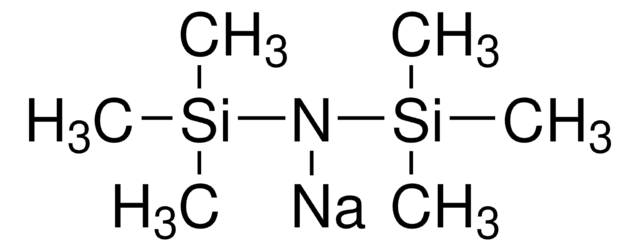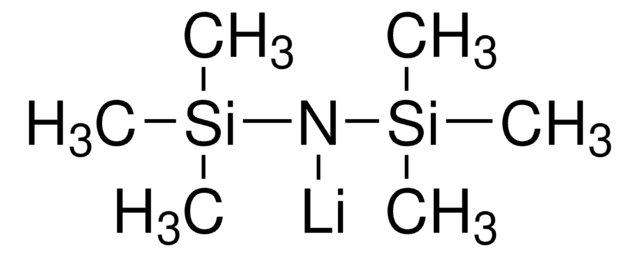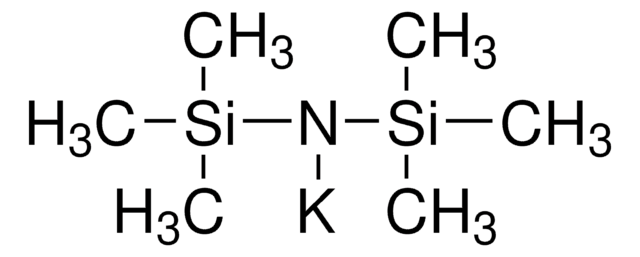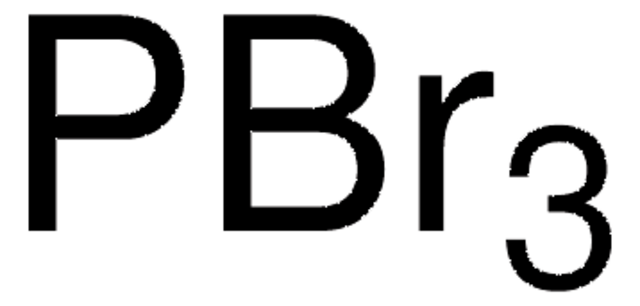368059
Sodium bis(trimethylsilyl)amide solution
0.6 M in toluene
Synonym(s):
Hexamethyldisilazane sodium salt solution
About This Item
Recommended Products
form
liquid
concentration
0.6 M in toluene
density
0.87 g/mL at 25 °C
SMILES string
C[Si](C)(C)N([Na])[Si](C)(C)C
InChI
1S/C6H18NSi2.Na/c1-8(2,3)7-9(4,5)6;/h1-6H3;/q-1;+1
InChI key
WRIKHQLVHPKCJU-UHFFFAOYSA-N
Looking for similar products? Visit Product Comparison Guide
Signal Word
Danger
Hazard Statements
Precautionary Statements
Hazard Classifications
Aquatic Chronic 3 - Asp. Tox. 1 - Eye Dam. 1 - Flam. Liq. 2 - Repr. 2 - Skin Corr. 1B - STOT RE 2 - STOT SE 3
Target Organs
Central nervous system
Supplementary Hazards
Storage Class Code
3 - Flammable liquids
WGK
WGK 3
Flash Point(F)
42.8 °F - closed cup
Flash Point(C)
6 °C - closed cup
Personal Protective Equipment
Certificates of Analysis (COA)
Search for Certificates of Analysis (COA) by entering the products Lot/Batch Number. Lot and Batch Numbers can be found on a product’s label following the words ‘Lot’ or ‘Batch’.
Already Own This Product?
Find documentation for the products that you have recently purchased in the Document Library.
Our team of scientists has experience in all areas of research including Life Science, Material Science, Chemical Synthesis, Chromatography, Analytical and many others.
Contact Technical Service






